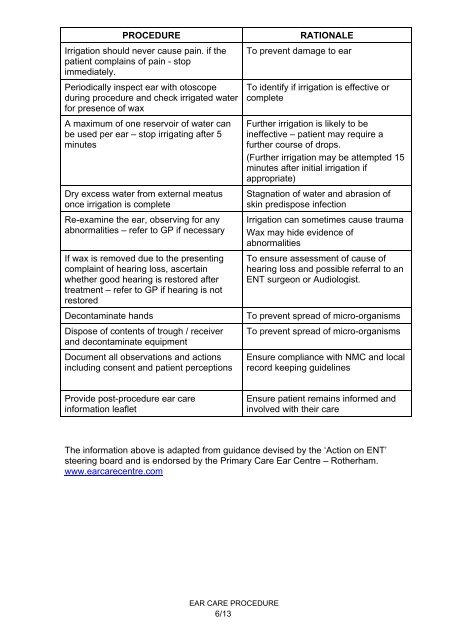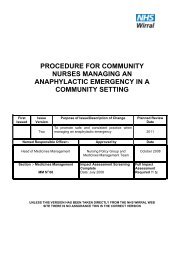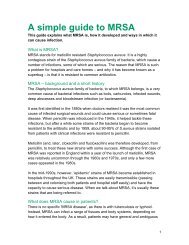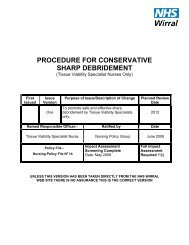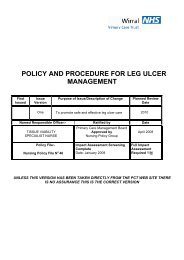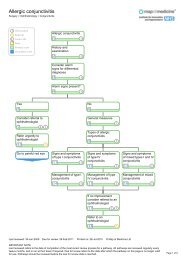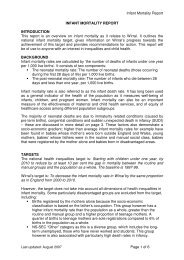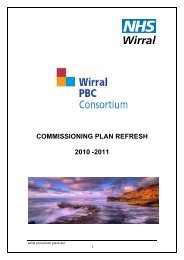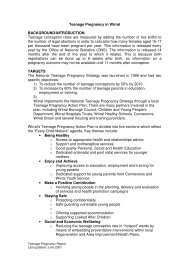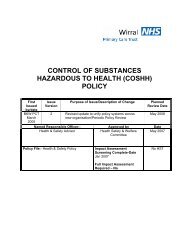EAR CARE PROCEDURE FOR COMMUNITY NURSING SERVICES
EAR CARE PROCEDURE FOR COMMUNITY NURSING SERVICES
EAR CARE PROCEDURE FOR COMMUNITY NURSING SERVICES
You also want an ePaper? Increase the reach of your titles
YUMPU automatically turns print PDFs into web optimized ePapers that Google loves.
<strong>PROCEDURE</strong><br />
Irrigation should never cause pain. if the<br />
patient complains of pain - stop<br />
immediately.<br />
Periodically inspect ear with otoscope<br />
during procedure and check irrigated water<br />
for presence of wax<br />
A maximum of one reservoir of water can<br />
be used per ear – stop irrigating after 5<br />
minutes<br />
Dry excess water from external meatus<br />
once irrigation is complete<br />
Re-examine the ear, observing for any<br />
abnormalities – refer to GP if necessary<br />
If wax is removed due to the presenting<br />
complaint of hearing loss, ascertain<br />
whether good hearing is restored after<br />
treatment – refer to GP if hearing is not<br />
restored<br />
Decontaminate hands<br />
Dispose of contents of trough / receiver<br />
and decontaminate equipment<br />
Document all observations and actions<br />
including consent and patient perceptions<br />
RATIONALE<br />
To prevent damage to ear<br />
To identify if irrigation is effective or<br />
complete<br />
Further irrigation is likely to be<br />
ineffective – patient may require a<br />
further course of drops.<br />
(Further irrigation may be attempted 15<br />
minutes after initial irrigation if<br />
appropriate)<br />
Stagnation of water and abrasion of<br />
skin predispose infection<br />
Irrigation can sometimes cause trauma<br />
Wax may hide evidence of<br />
abnormalities<br />
To ensure assessment of cause of<br />
hearing loss and possible referral to an<br />
ENT surgeon or Audiologist.<br />
To prevent spread of micro-organisms<br />
To prevent spread of micro-organisms<br />
Ensure compliance with NMC and local<br />
record keeping guidelines<br />
Provide post-procedure ear care<br />
information leaflet<br />
Ensure patient remains informed and<br />
involved with their care<br />
The information above is adapted from guidance devised by the ‘Action on ENT’<br />
steering board and is endorsed by the Primary Care Ear Centre – Rotherham.<br />
www.earcarecentre.com<br />
<strong>EAR</strong> <strong>CARE</strong> <strong>PROCEDURE</strong><br />
6/13


